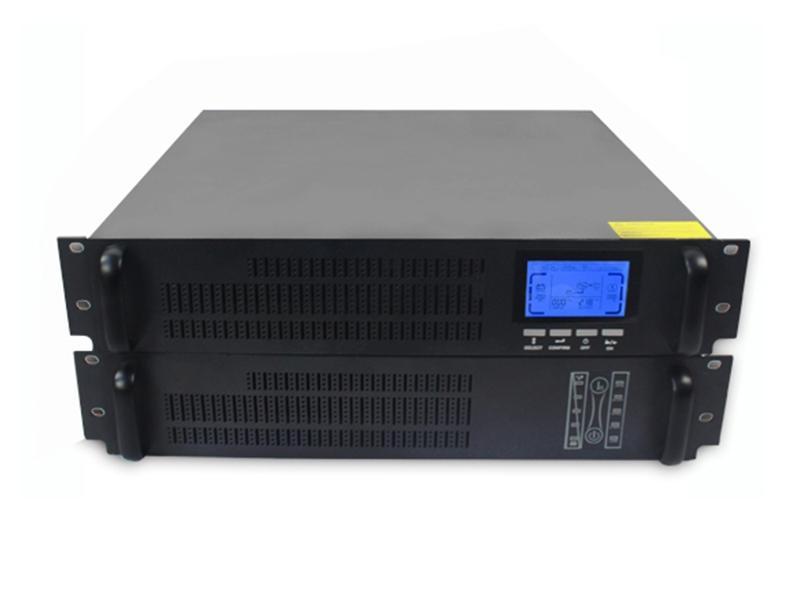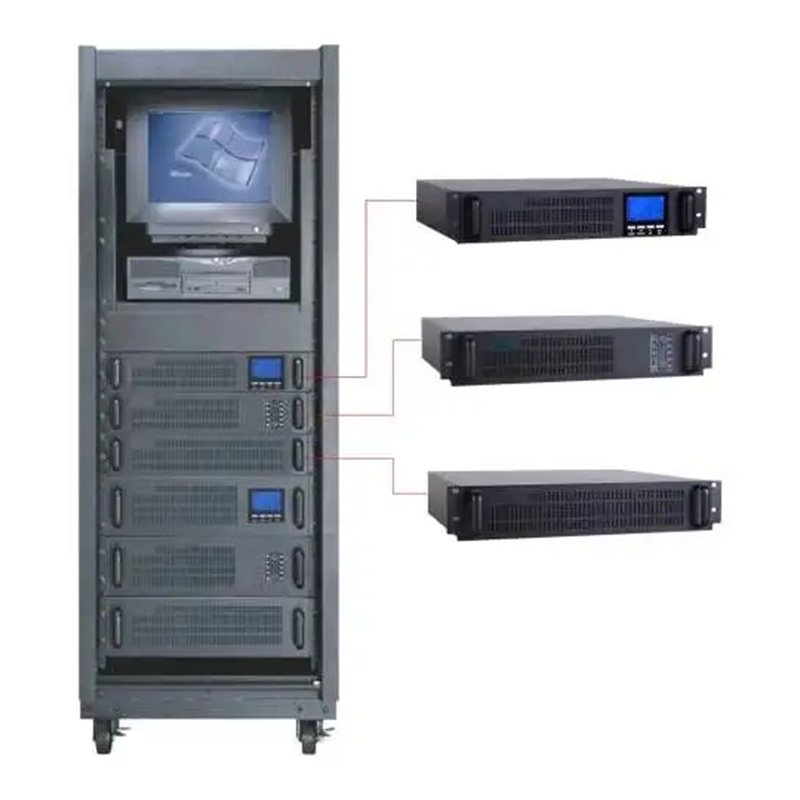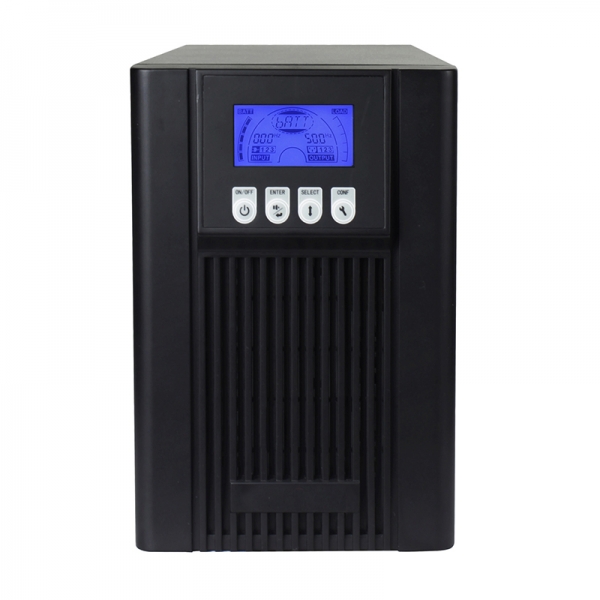
In factories and server facilities, power instability is something almost everyone deals with. Voltage drops, brief surges, and total blackouts can stop machines, corrupt data, or shorten the life of expensive systems. These issues often come from unpredictable grids or overloaded local networks.

To keep things running smoothly, two devices are commonly used — the UPS (Uninterruptible Power Supply) and the voltage stabilizer (also known as AVR – Automatic Voltage Regulator). Both protect sensitive electrical systems, but they don’t do the same job. A UPS keeps your power on during an outage, while a stabilizer makes sure the voltage stays steady when the grid wavers.
This article walks through how each one works, where they differ, and how to pick the right setup — UPS, stabilizer, or both — for industrial and IT applications.
ZLPOWER, a long-time manufacturer of professional UPS and stabilizer systems, shares practical insights from real-world projects.
A voltage stabilizer helps keep the output voltage within a safe range even when the incoming supply jumps up or down. It quietly corrects the problem before it reaches your equipment.
For example, ZLPOWER’s pure sine wave inverter chargers with built-in AVR can keep supplying stable power when the grid is unstable. In practice, this means less downtime, fewer damaged parts, and longer equipment life.
Every stabilizer follows the same basic logic:
l It checks the incoming voltage.
l It adjusts the output through a servo motor or electronic circuit.
l It holds the output voltage close to its rated value — usually within ±1–2%.
You’ll find several types in factories and IT rooms:
l Servo-controlled units that move a motor to fine-tune the voltage.
l Static versions using semiconductors for fast response.
l Digital models with microprocessor control for higher precision.
Different sites use different versions, depending on how unstable the local power is.
In industrial environments, stabilizers guard CNC machines, conveyor drives, and PLC systems from low or high voltage. In data rooms, they help servers, routers, and cooling systems stay within their safe range.
Main benefits include:
l Better overall power quality
l Less downtime caused by voltage swings
l Longer lifespan for motors and electronics
l High efficiency, often between 95% and 98%
ZLPOWER’s servo stabilizers are already running in many manufacturing plants and communication hubs, where stable voltage is critical to keep production on schedule.
A UPS steps in when the power completely fails. The device switches to battery power so that connected systems don’t shut down. This quick response avoids lost data, damaged components, and hours of recovery work.
ZLPOWER’s online UPS systems are often used in data centers, hospitals, and telecom sites where even a split second of power loss is unacceptable.
A UPS has several main parts:
l A rectifier turns AC into DC to charge its batteries.
l An inverter turns the stored DC back into AC when the grid cuts out.
l The battery bank stores backup energy.
l A bypass line keeps power flowing if a fault occurs or maintenance is needed.
There are three common types:
l Offline or standby UPS, for small loads that can tolerate a few milliseconds of delay.
l Line-interactive UPS, which adds simple voltage regulation.
l Online or double-conversion UPS, which always runs the load from the inverter, giving clean, isolated power.
Modern designs, such as ZLPOWER’s GP33 Series, use DSP (Digital Signal Processor) control for better accuracy and efficiency.
A UPS is essential wherever downtime means loss:
l In data centers, it keeps servers and switches alive until generators start.
l In industrial lines, it keeps PLCs, sensors, or control panels active during a short blackout.
Typical advantages:
l No interruption when power fails
l Protection against blackouts and surges
l Stable voltage and frequency
l Improved power factor and waveform quality

A UPS focuses on keeping your system running during power cuts.
A stabilizer focuses on keeping the voltage smooth while the power is still on.
UPS units have batteries and inverters that take over during an outage.
Stabilizers don’t store energy — they only correct voltage.
Only online double-conversion UPS models, like the ZLPOWER GP33, can control both voltage and frequency at the same time.
Stabilizers handle voltage but leave frequency to the grid.
UPS systems need battery space, cooling, and periodic checks.
Stabilizers require little upkeep, often running for years without service.
UPS systems cost more and use more energy because of their batteries, yet they’re vital for mission-critical work.
Stabilizers are more efficient (95–98%) and cost-effective where outages are rare.
In factories with frequent voltage swings but few outages, a stabilizer may be all you need.
If a sudden loss of power would stop production or ruin materials, you’ll want a UPS, or better yet, a hybrid system.
Many engineers use both: the stabilizer filters the supply, while the UPS takes over during total loss.
For server rooms and network hubs, uptime is non-negotiable.
Here, an online UPS is essential.
If your grid voltage also fluctuates, pairing it with a servo stabilizer, such as ZLPOWER’s hybrid solution, gives dual protection — steady voltage and backup power.
Start by looking at:
l How wide the voltage swings are
l Whether frequency is stable
l How often outages happen
l How sensitive your equipment is
That will tell you whether you need conditioning, backup, or both.
Check:
l Load size (kVA or kW)
l Required response time
l Battery backup duration (for UPS)
l Overload and waveform quality (pure sine wave output preferred)
Besides the purchase cost, consider:
l Battery replacement and maintenance
l Energy efficiency
l Possible downtime savings
Stabilizers usually have a lower lifetime cost if backup power isn’t necessary.
For high-risk operations — hospitals, semiconductor lines, or data centers with unstable grids — the best setup combines both.
A stabilizer in front of an online UPS covers every issue from slow voltage drift to full blackouts.
ZLPOWER’s hybrid UPS-stabilizer systems use green inverter technology to provide clean, efficient power for both industrial and IT environments.

Deciding between a UPS and a stabilizer depends on your actual situation.
If blackouts are frequent and downtime is costly, a UPS is a must.
If the grid is steady but voltage varies, a stabilizer will do the job more economically.
When both problems exist, using both gives you complete, uninterrupted protection.
Pro Tip: ZLPOWER’s engineers can help analyze your site and recommend the right UPS + stabilizer setup for your factory or data center.
A: Only online UPS units can fully stabilize voltage. For other types, a stabilizer still helps.
A: Usually every three to five years, depending on temperature and usage.
A: Yes. Install the stabilizer before the UPS input.
A: Stabilizers run at 95–98% efficiency. UPS systems range between 85% and 94%.